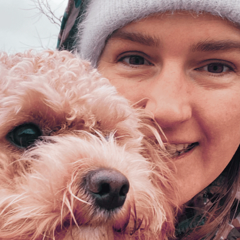

By Hilary Cluett, President UX Vocab Club – A Service Design Agency
As a business leader, you are constantly under pressure to innovate, stay competitive, and
deliver exceptional customer experiences. Unfortunately, many solutions fail to meet the
market’s evolving needs.
“Some business leaders like to dream about the outcome and talk about it and
even invest in it, but they won’t do the work that’s required to get there.” –
Eitan Markus, Business Coach.
What is the root cause? It could be thinking in a silo, working in isolation, operating in a
vacuum, or narrow execution.
Many organizations still operate within departmental silos, with designers, engineers,
developers, and other key stakeholders working in isolation. A fragmented approach leads
to business challenges that hinder operations, solutions, products or services from
reaching their full potential.
Let’s explore three significant business challenges caused by siloed design and how
integrating cross-disciplinary expertise can offer practical solutions.
In today’s fast-paced business environment, speed to market is essential. When product
development, UX, and visual design teams operate separately, miscommunication and
lengthy review cycles slow down the process, leading to missed opportunities. For
example, one client the UX Vocab Club worked with reduced their product development
cycle by 75% by adopting a collaborative design approach.
In our example, the UX Vocab Club created a cross-collaborative team to streamline the
innovation pipeline. We enabled rapid ideation and prototyping by combining civil
engineering and user experience design specialists with brand strategy, marketing, and
systems management. We validated the concept and significantly accelerated the
startup’s time to market.
Designers working in isolation may create aesthetically pleasing solutions that fail to
resonate in the real world because they make assumptions about the customer’s wants
rather than understanding their behaviours and needs.
Innovative solutions can address genuine problems for a target audience when a cross-
disciplinary team provides a comprehensive view of the customer experience,
For example, one business we worked with saw a 40% increase in customer bookings
after adopting a collaborative approach.
Siloed design teams may produce visually appealing but generic products and services
that fail to capture your brand’s unique personality and will not help you stand out in a
crowded and competitive industry.
For example, to build a functional and unique offering that helps you rise above the noise
and connect with customers on a deeper level, you might look for these types of designers
to work on your team:
The evidence is clear: businesses that embrace cross-collaborative design unlock their
competitive edge. By breaking down silos and tapping into diverse expertise, you can
overcome your most significant challenges and deliver innovative solutions that drive
tangible results.
In Part 2 of this series, we’ll explore the steps you can take to foster this collaborative
mindset within your organization and assemble the right cross-disciplinary design team.
Until next time!